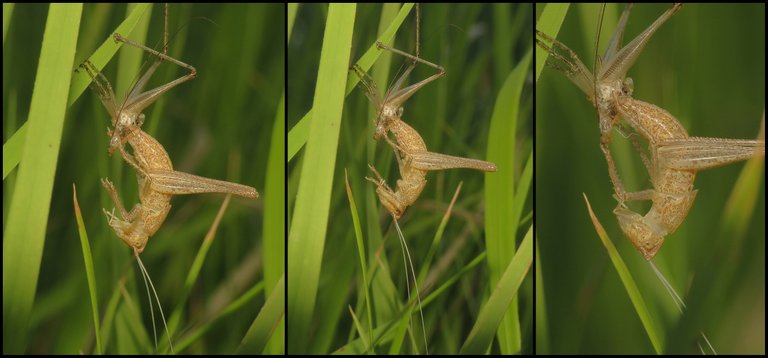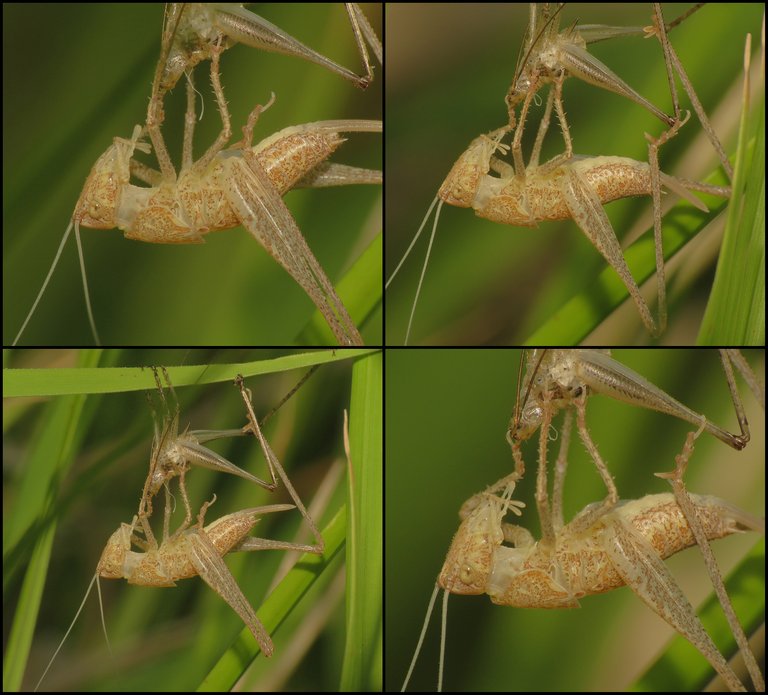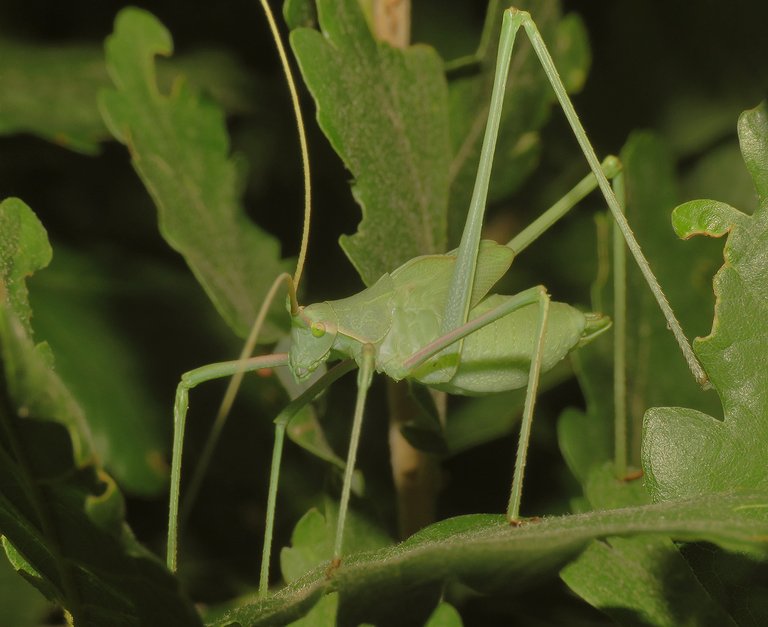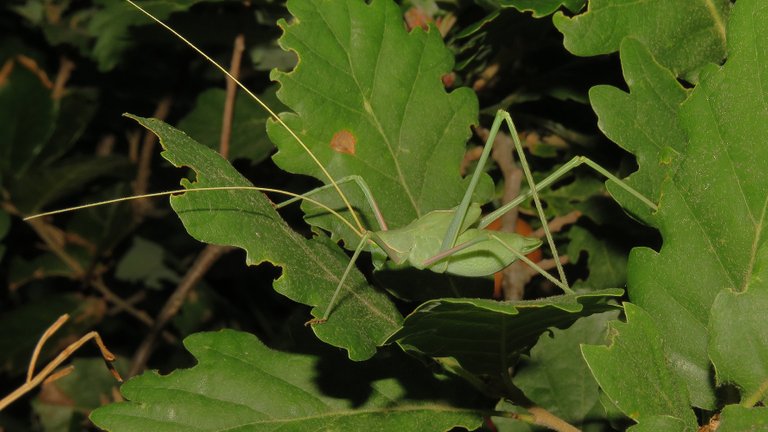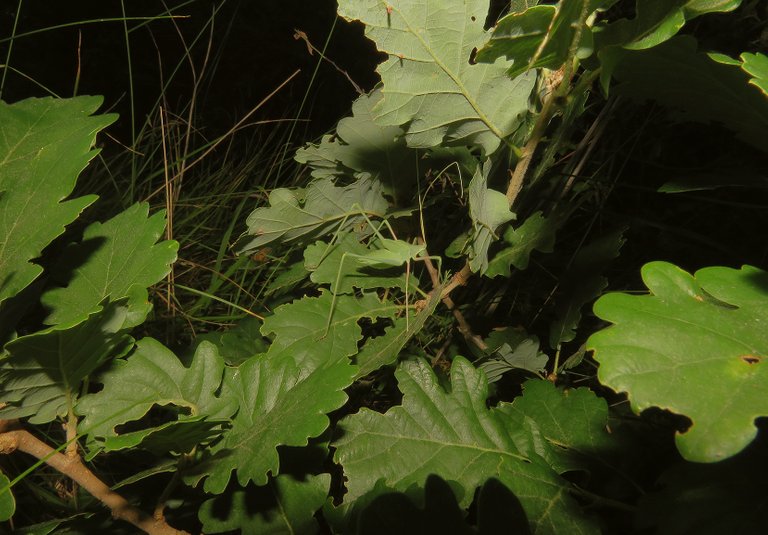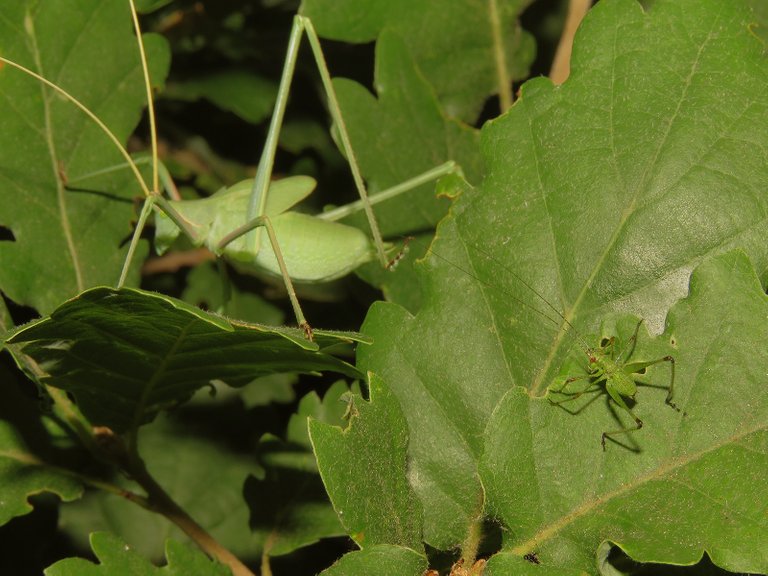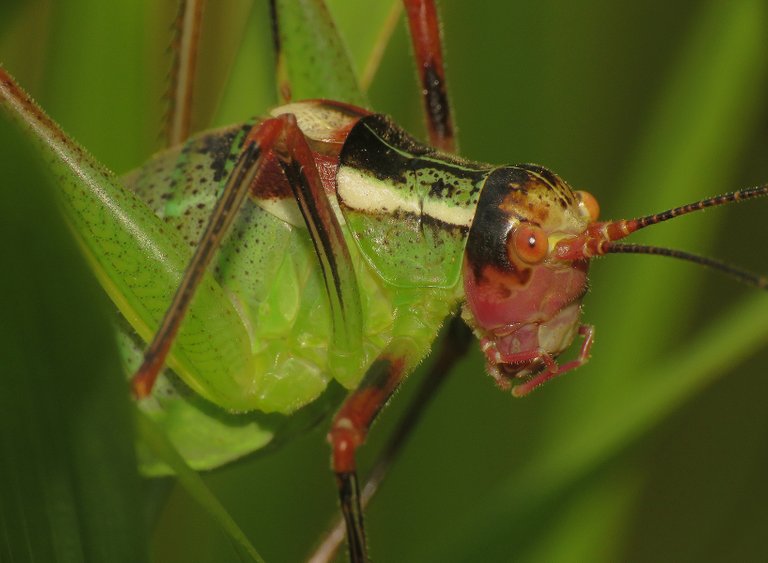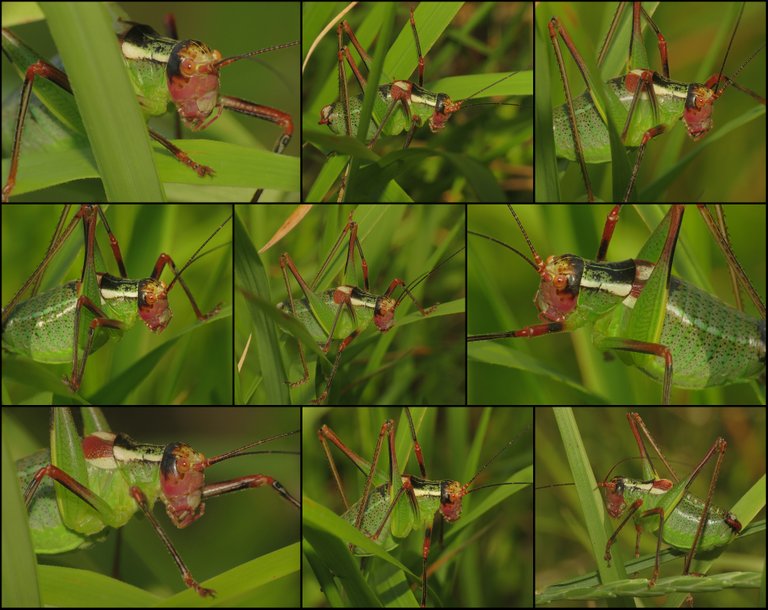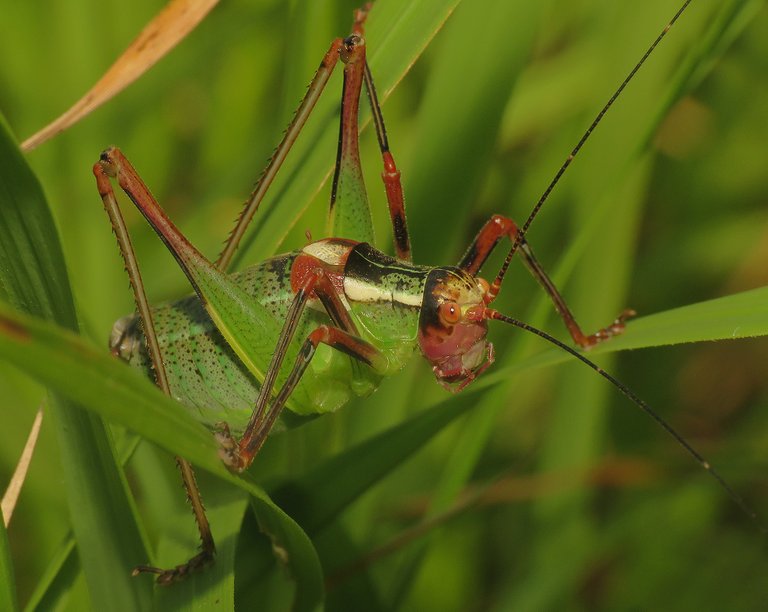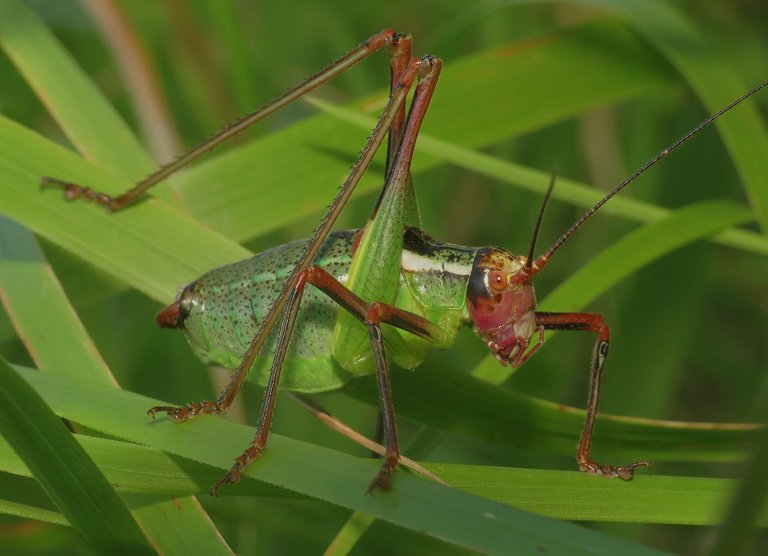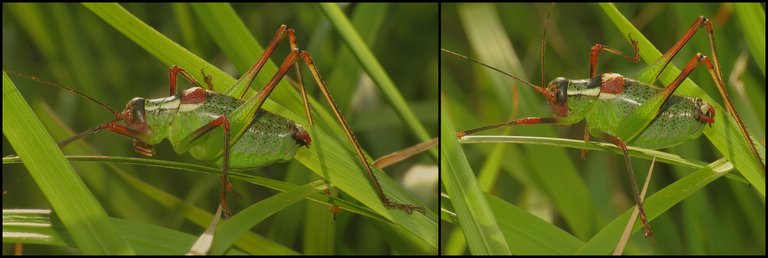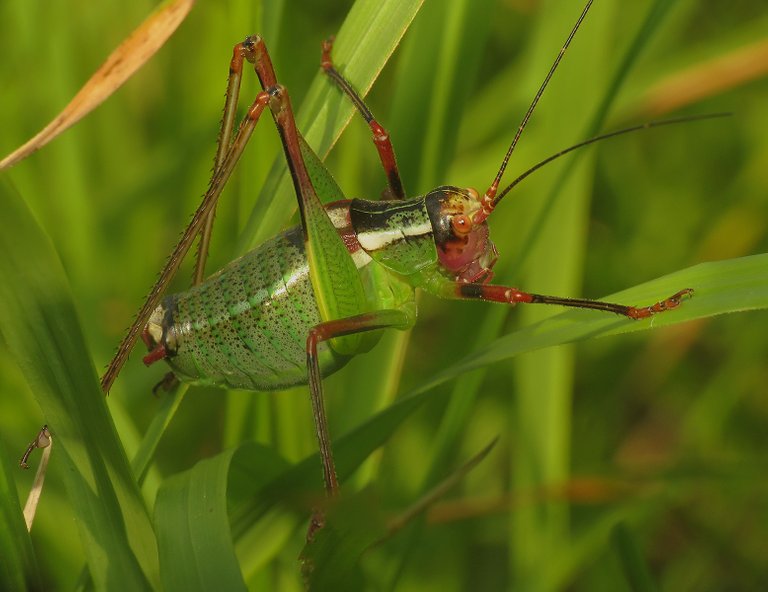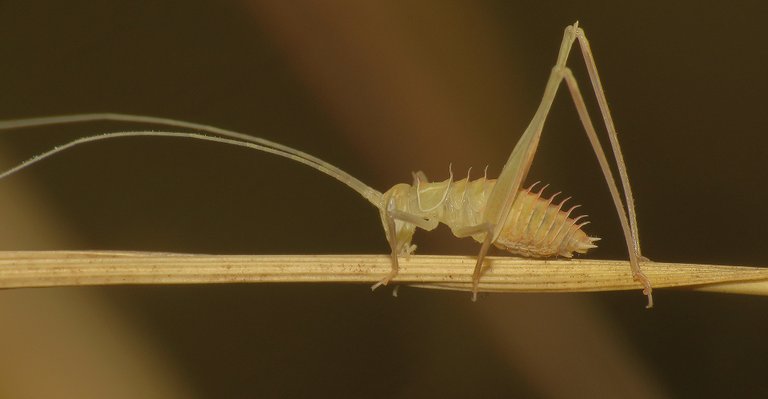Every day, usually in the evening, I spend an hour or two in the meadows along the country lane that leads through the villages between my hometown and the city of Pula. Sometimes those photographs are organized in posts about a community of small arthropods active around some specific plant. Other times the focus is on one specific species, or like today, on a group of insects, members of the same family.
In this opening triptych, a young bush cricket is coming out of its old tight skin.
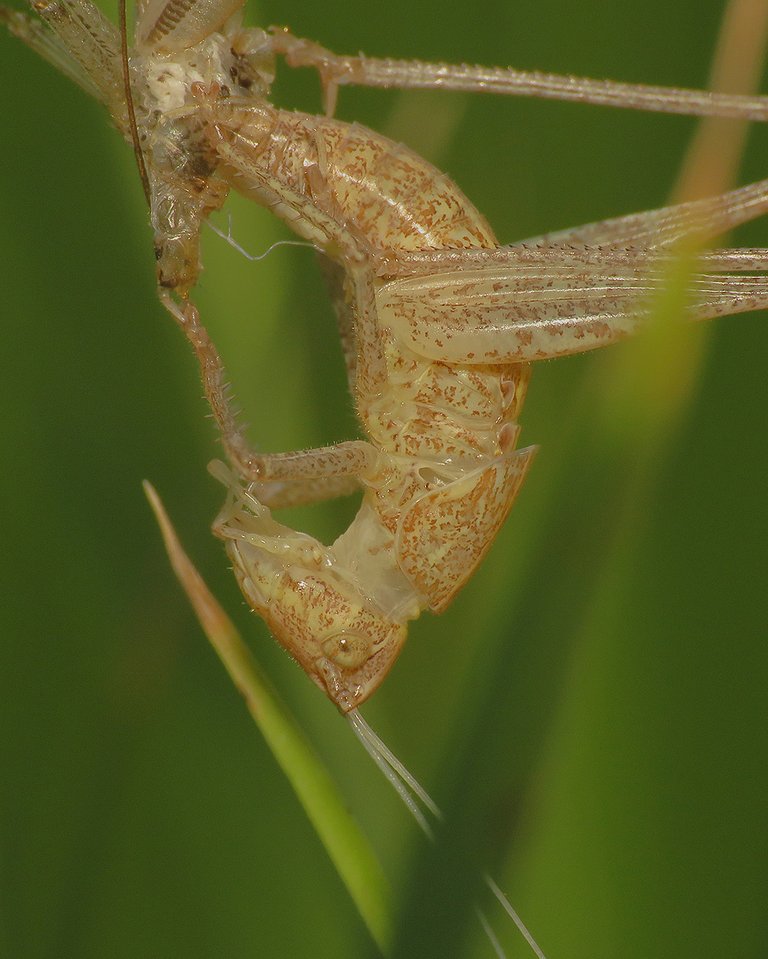
Unlike the species with larval stages that look very different from their adult versions, the young Tettigonidae look like smaller, still recognizable versions of completely formed adults. They don't go through dramatic, shape-shifting metamorphosis, but like all arthropods, these nymphs have to shed their exoskeletons as they grow.
The fast and agile bush crickets are very vulnerable during molting.
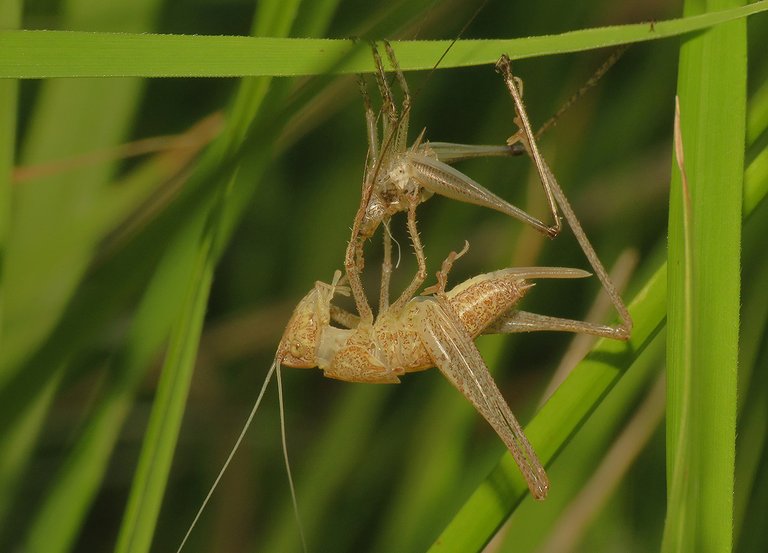
The nymph is soft and slow after emerging from its old exoskeleton.
It will take a couple of hours for the new exoskeleton to harden and for the pale colors and markings to get darker and defined.
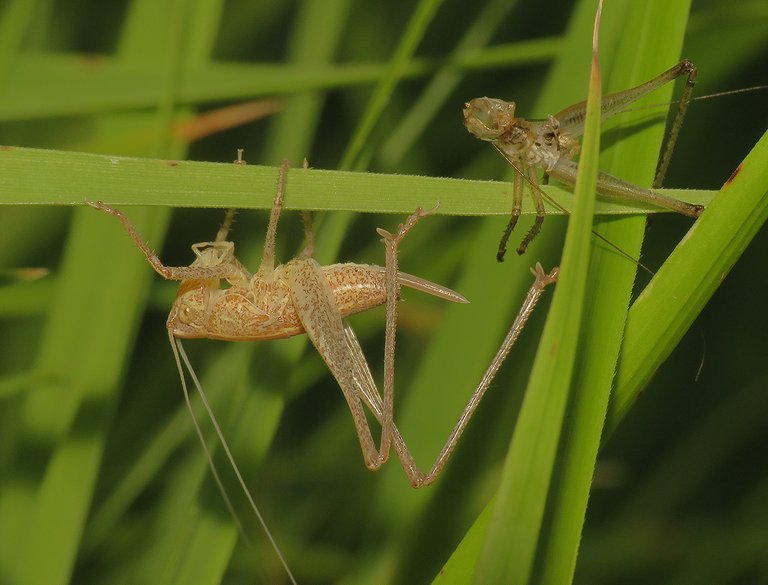
The molting mostly occurs at dusk and during the night. Sometimes early in the morning or during the day if the weather is humid and cloudy. In this series of shots, you just followed the evening molting of the Rhacocleis germanica female.
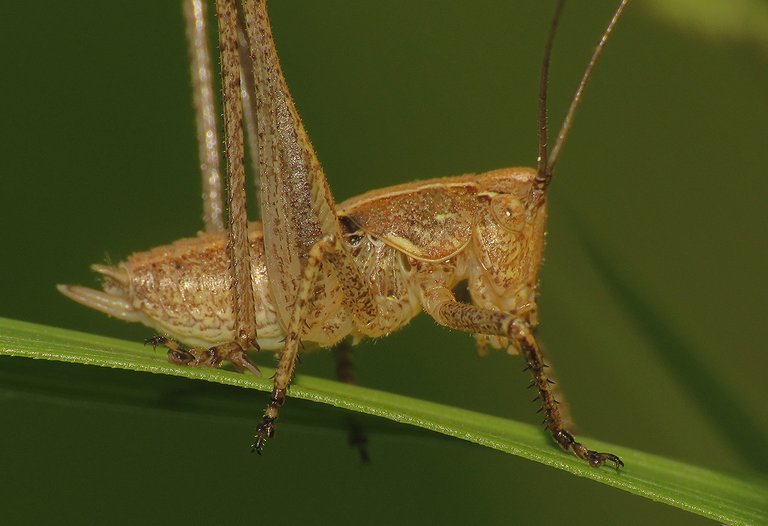
Here you can see the male nymph of the same species.
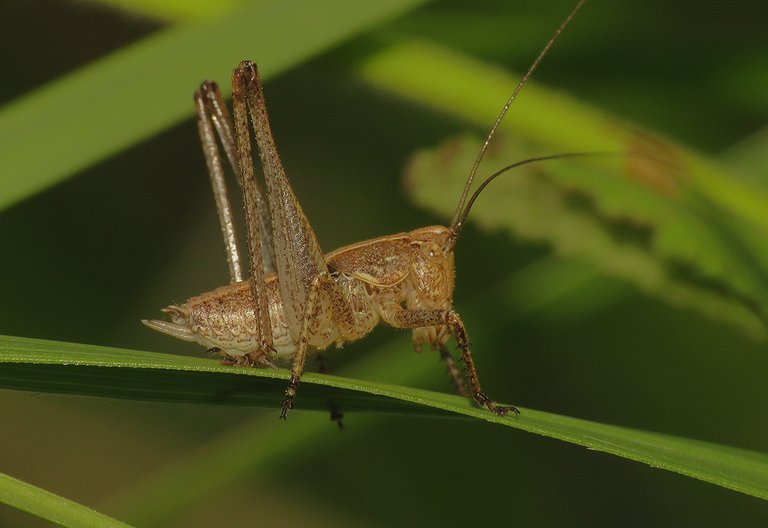
As you can see the insect is slightly darker with better-defined makings than the molting one.
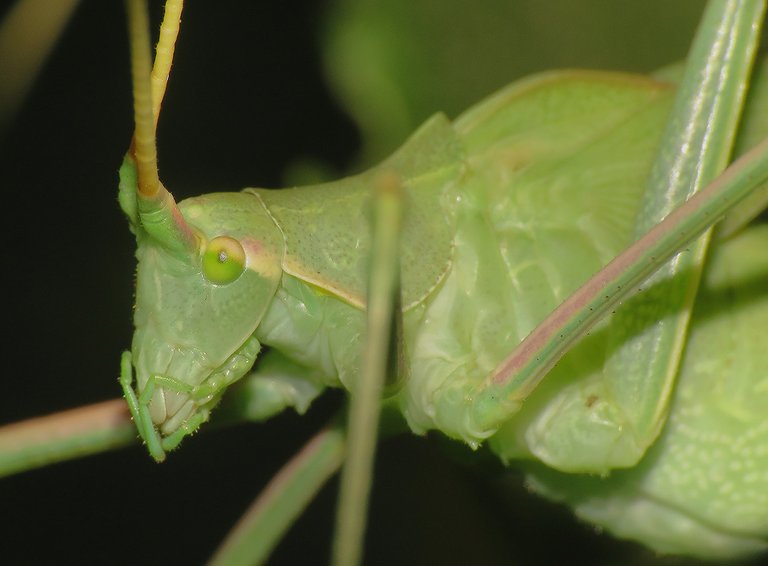
Here you can see the portrait of a much bigger nymph.
This Acrometopa macropoda is very close to its adult stage.
I found it on the foliage of the fresh shoots around the small oak tree that looked more like a shrub than a real tree.
The bushcricket was well camouflaged in that green environment.
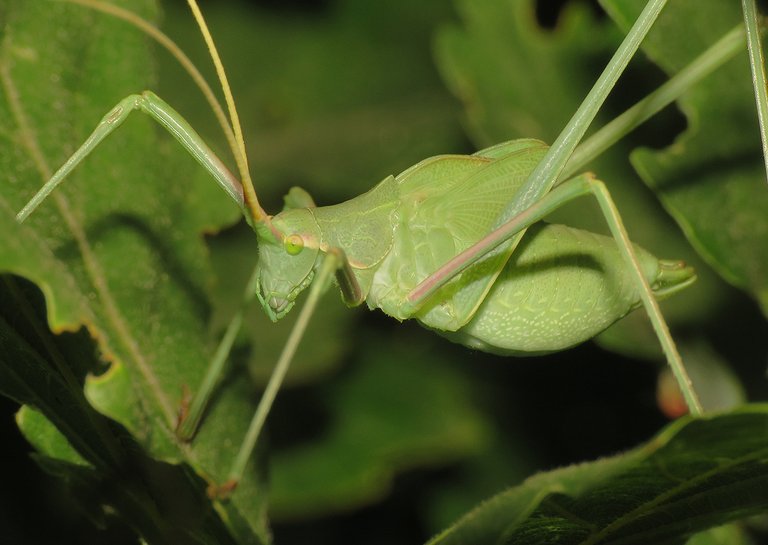
The Acrometopa macropoda is commonly known as the Common long-legged bush cricket. The name says everything. Its legs and antennae are impressively long.
While I was photographing the Acrometopa macropoda, a much smaller Phaneroptera nana nymph entered the scene. You can take a good look at it if you enlarge this photograph by clicking on it.
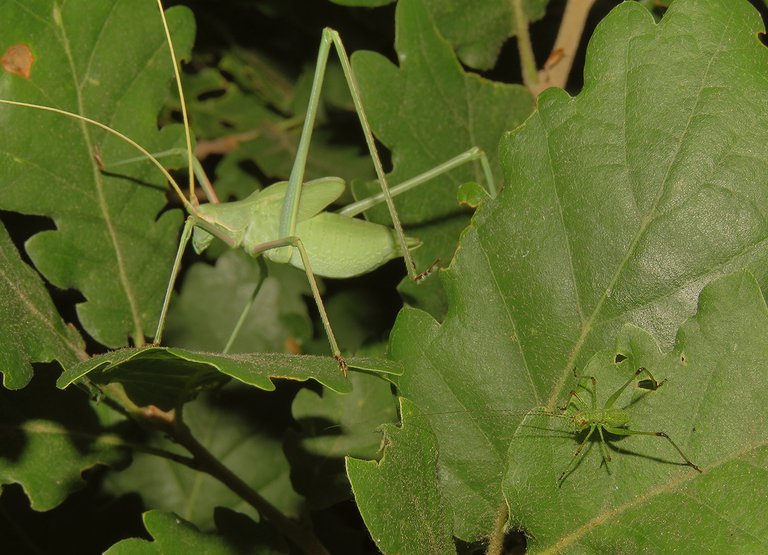
As an adult, the Phaneroptera nana is a considerably smaller bushcricket than the exceptionally large Acrometopa macropoda, but the Acrometopa macropoda also started as a small nymph, similar in size to the young Phaneroptera nana in these two photographs.
This bush cricket has an interesting way of hiding in the green grass.
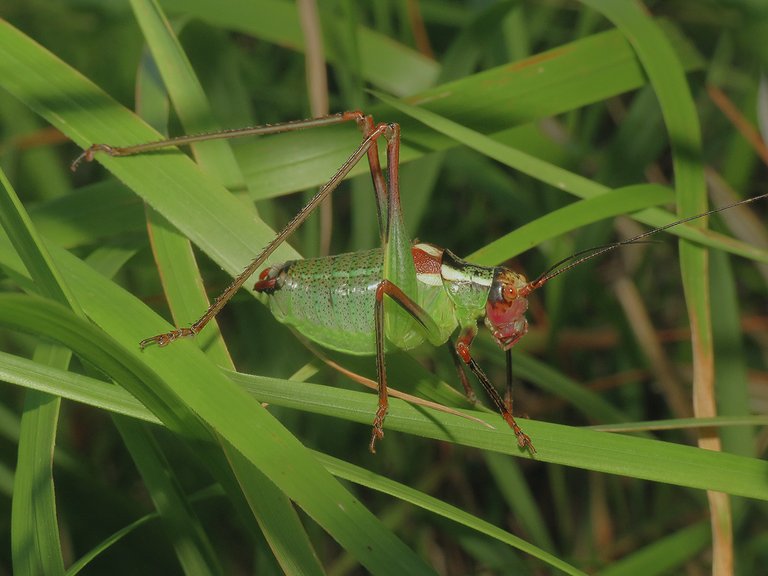
Red-colored fragments on its head and legs are clearly visible, but the rest of the body is green and easily merges with the green surroundings.
Some grasses have a bit of red or pink around the segments on the stem, and the colorful areas of the cricket's body look exactly like those.
It's easy to notice that there is something red in the green grass ...
... but is relatively hard to recognize an insect in those broken shapes. If you take a good look at this photograph, you'll notice that the pretty big and heavy bushcricket is standing on the gracile leaves of grass that can barely sustain that weight.
The insect was very carefully balancing while moving through the grass.
After a long and extensive Internet search, I still wasn't able to identify the exact species. The genus is probably Barbitistes. It looks like a completely formed adult male.
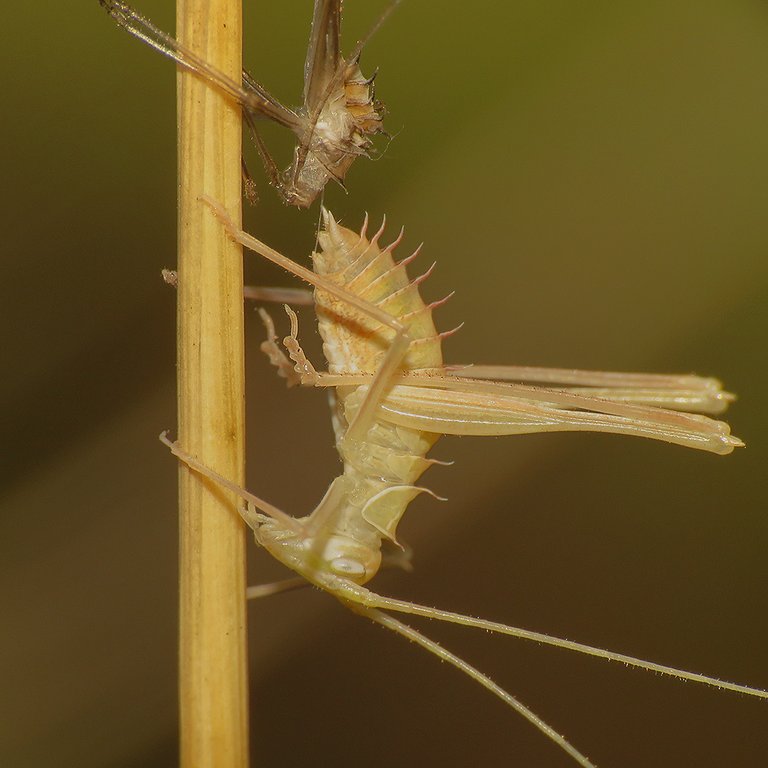
Here you can see another young nymph ...
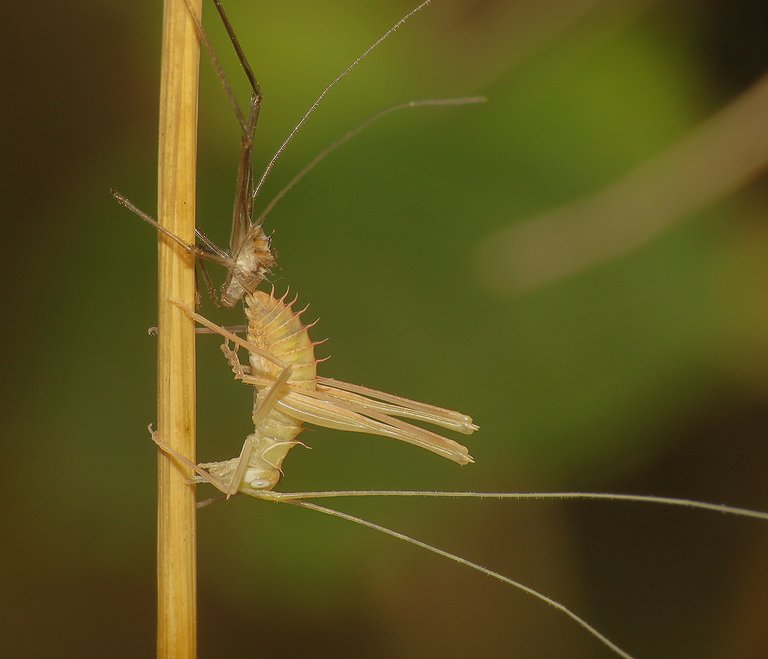
... that just came out of its old exoskeleton.
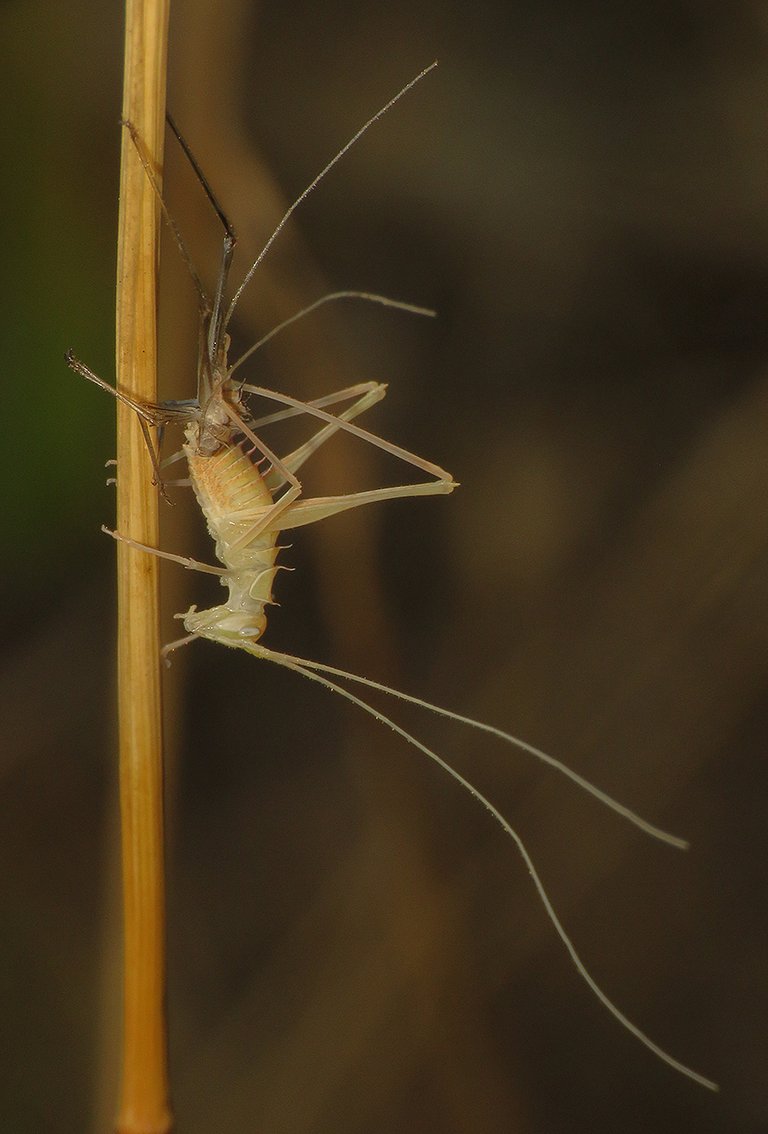
These photographs were taken in the evening. The sun was already somewhere behind the horizon and the light was pretty low. So I had to use the internal flash of my camera. But I liked how the scene looked in the ambient light ...
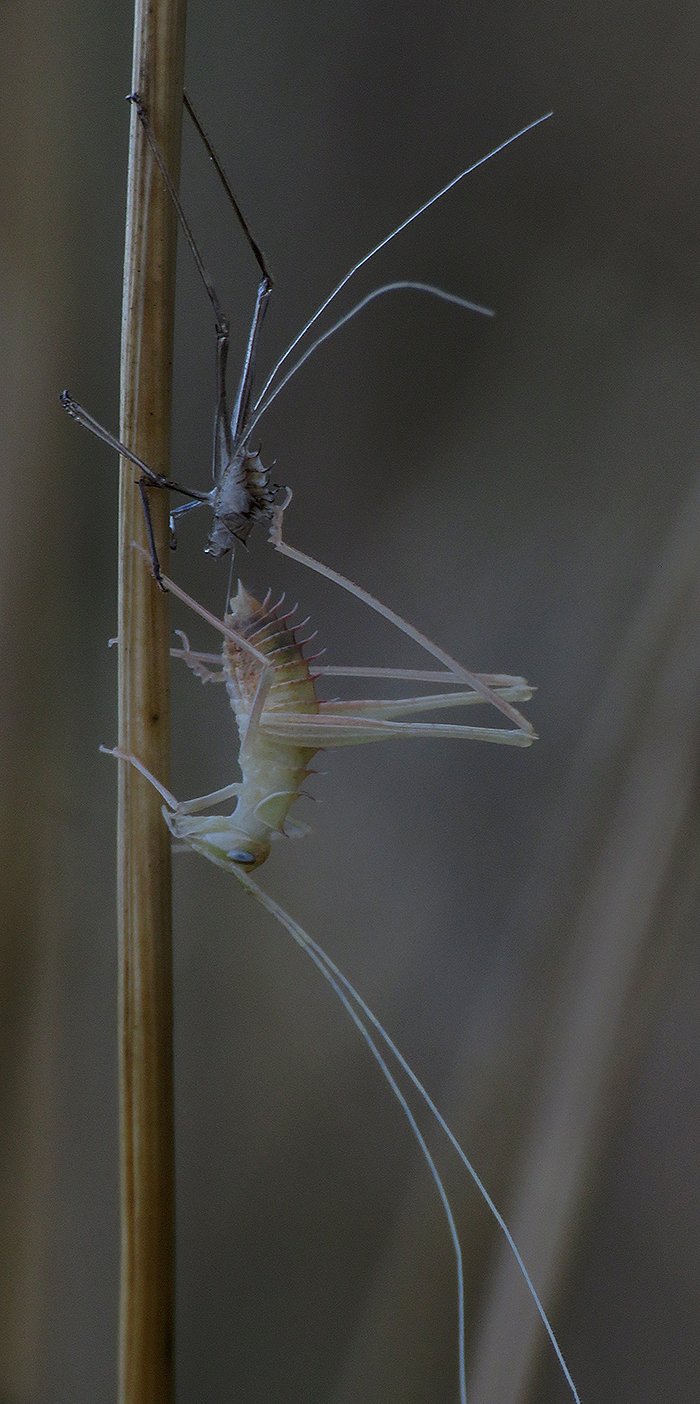
... so I mounted the camera on my backpack and took this long exposure shot.
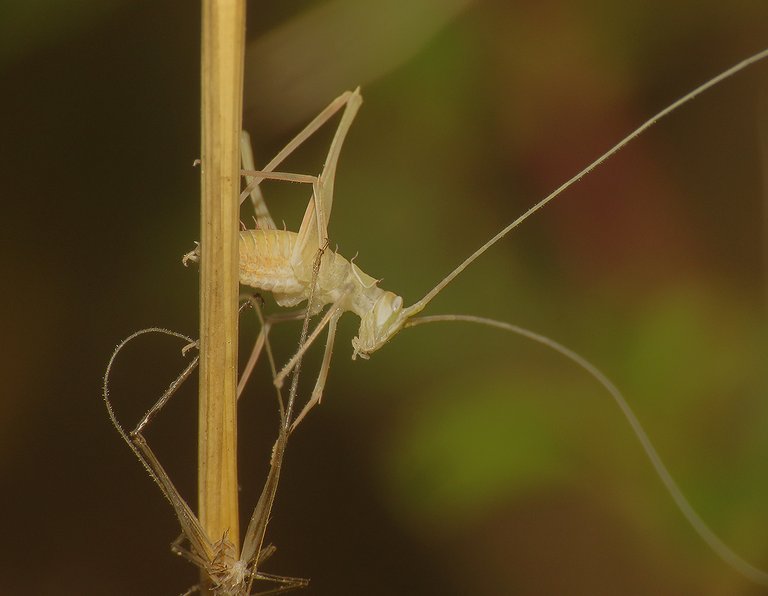
Tylopsis lilifolia is the name of this last species that you'll see in the post.
AND THAT'S IT. AS ALWAYS HERE ON HIVE, THE PHOTOGRAPHS ARE MY WORK - THE END.
